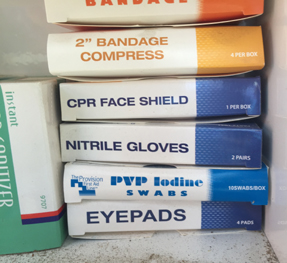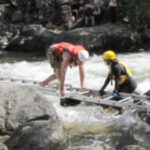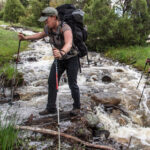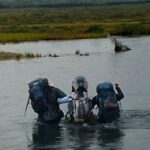Many of the students in my first aid classes, either just first aid, or first aid included in lifeguard training,
have had “facts” they were sure about on how to give first aid, or how injuries occur,
that are totally untrue.
Each professional rescuer has a standard of care to follow
(from their textbook and/or in-service training at their workplace)
or they can be negligent,
and even non-professionals who voluntarily give care should follow their training
and not fall for myths-that-sound-so-plausible they heard about outside of their training.
![]()
Here are some of the common fallacies:
![]()
1) You should use aloe cream on burns.
this is not true
U.C. Berkeley Wellness talked about the lack of research on aloe, and says:
“Nearly all commercial aloe creams and lotions actually contain so little pure aloe that they couldn’t have much effect (they are simply moisturizers).
Some contain other chemicals of questionable usefulness.
Even if you use pure aloe, there are more than 300 species,
with different chemical compositions and thus possibly different effects.”
2) You should clean wounds with hydrogen peroxide to prevent infection.
this is not true
U.C. Berkeley Wellness said:
“If possible, hold it under cool running water. According to Larry Weiss, M.D., professor of emergency medicine at the University of Maryland School of Medicine in Baltimore, “the only thing proven to prevent infection is irrigation.”
Use soap on the surrounding skin, but not on the wound itself.
If you see dirt particles, remove them with tweezers.”
“Experts disagree about antibiotic creams. Some people (especially parents) would not be without bacitracin, neomycin or a similar ointment. These cause skin irritation, however, and are unnecessary if you cleanse the wound and keep it clean.
Harsh antiseptics such as rubbing alcohol, iodine, hexylresorcinol and hydrogen peroxide
are not only unnecessary but can actually damage skin and retard healing.”
Plus, these are painful when applied!
Just because a commercial first aid kit at the hotel pool has iodine swabs in it does not mean they are a good idea to use:
3) Crazy glue can be used to seal up a wound and prevent further bleeding.
this is not true
The manufacturer says “Krazy Glue products should not be used for wound care.”
In surgery doctors sometimes use a substance to seal wounds that functions like Krazy Glue.
But in surgery everything is clean and there is little chance of infection.
If a lay person uses glue on a wound, they are often sealing in germs
and serious, even life threatening infections can occur.
Some people recommend using it on your dog, but again, you risk serious infection.
U.C. Berkeley Wellness warned: “Lots can go wrong if you try to glue a wound.
Unless the glue is precisely applied, the edges of the wound may not close up and/or the glue can migrate into the wound, which can result in inflammation and infection and may require surgical treatment.”
4) Use tweezers to remove bee stingers or jellyfish tentacles.
this is not true
this may cause them to inject more venom.
5) To remove a tick, apply fingernail polish, alcohol, a hot match, a lit cigarette, petroleum jelly, lotions or other potions.
NO, they do not work and they increase the risk that the tick will salivate or regurgitate into you and increase infection.
Reading assigned for later in this class, Wilderness First Aid Outline has how to properly remove a tick.
6) If someone is having a seizure, you need to put something between their teeth.
NO, that is not needed and can be dangerous to the victim and to you.
And, no, people do not ever “swallow” their tongue.
When people go unconscious their muscles relax, and especially if they are lying on their back, their tongue can block their airway (breathing tube), but they never swallow it. (There is more at Seizures, causes of and basic care for)
7) Cough if you feel a heart attack coming on.
NO.
U.C. Berkeley Wellness calls this “a prime example of much of the health advice you’ll find on the Internet: mostly bogus but containing a shard of truth . . . wishful thinking, disavowed by Rochester General Hospital — to which the advice is sometimes attributed — as well as the American Red Cross and American Heart Association.”
You can read more at:
https://www.heart.org/en/health-topics/cardiac-arrest/emergency-treatment-of-cardiac-arrest/cough-cpr
8) Most cases when first aid (or more) is needed can’t be prevented.
this is Not true
Statistically, most of the ways we injure ourselves CAN be prevented.
Study after study tell us that prevention of injuries is possible.

– – Wearing a seatbelt won’t keep you out of an accident, but you are more likely to survive it.
The The Centers for Disease Control and Prevention (CDC) tells us: “Seat belt use is one of the most effective ways to save lives and reduce injuries in crashes. Yet millions do not buckle up on every trip.”
and the CDC offers this chart:

Poster on the wall at a local hospital:
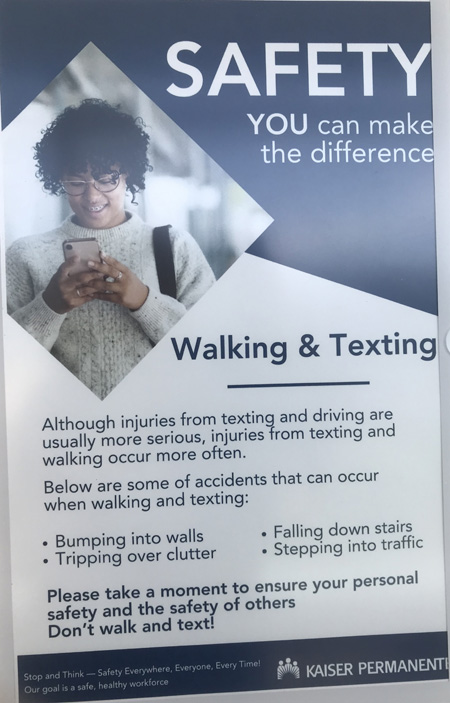
– – Please don’t wear flipflops, high heels, or platform shoes to drive. Don’t drive barefoot.
– – Please do wear shoes with closed toes to mow the lawn, not sandals or flip flops.
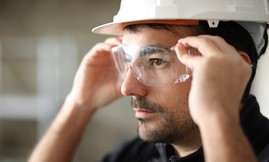
– – By wearing safety glasses not just at your job, but also while doing yardwork, and woodworking / carpentry you can prevent a ‘foreign’ body getting into your eye and even causing loss of vision. This can just be trimming a hedge or cutting one piece of wood. The CDC says: “ Small particles like dust, cement chips, metal slivers, and wood chips often hit or scrape the eye, causing most eye injuries. . . Even “minor” eye injuries can cause life-long vision problems and suffering that is recurrently painful . . .
. . . Fit or adjust your eye protection to make sure you have proper coverage, comfort, and adequate peripheral vision. . .”
Some companies offer employees a choice of which safety eyewear (protective eyewear that meets current safety standards), since the employers know that the employees are more likely to were their safety gear if they think they look good wearing them. The CDC notes: “Safety glasses have hard or soft nose pieces, padded temples, and a variety of other features that improve comfort without adding great cost. Safety glasses come in many styles from the Buddy Holly heavy frames, to the old visitor specs, frameless lens, frames with football logos, aviator metal frames, and the most stylish wraparound glasses.”
According to a report in the American Journal of Surgery,
Bike riders with helmets were less likely to die from their injuries, and less likely to break facial bones, and have 52 percent lower risk of severe traumatic brain injury. Unfortunately, less than half of the millions of Americans who ride bicycles wear bicycle helmets. Those who do wear them are more likely to be white, female and insured.
The Centers for Disease Control and Prevention (CDC) says:
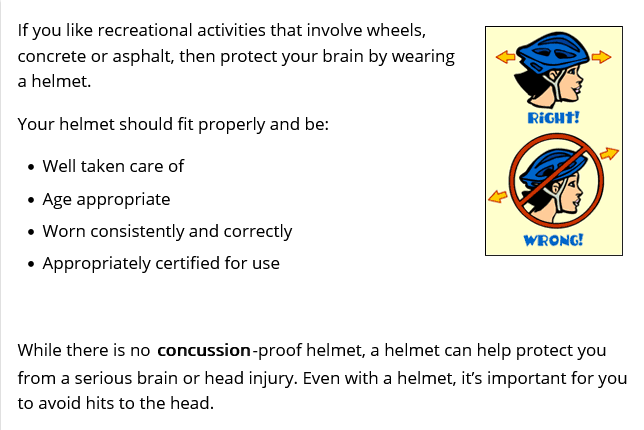
Wearing your bike helmet over a baseball cap or hat to give you shade is not advised,
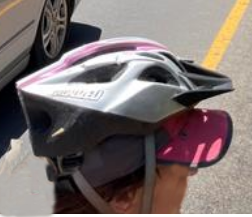
and trying to fit your helmet on over the hood of your hoodie won’t work either,
the helmet needs to be firmly on your head to protect you.
You can get a wide brim to put over your helmet
like National Park Service Search and Rescue Rangers wear
(be sure to get one that does not interfere with your peripheral vision):
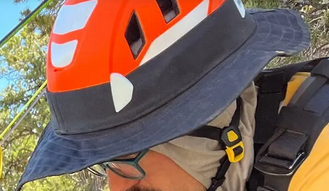
(In Australia, Finland, New Zealand, Dubai, parts of Canada and many other places,
bicycle helmets are mandatory in all states and territories for all ages.)
Yosemite Search and Rescue would like to remind you:
“California law requires riders under 18 to wear helmets.
Helmets are optional for bicycle riders 18 and over but they are an outstanding idea, inexpensive, and in many cases are the difference between a minor headache
and life-altering or life-ending injuries.
Unfortunately, when one observes bicycle operations in the Valley, the majority of adult bike riders, and even some children, opt to skip the helmet.
Once the crash occurs, it’s too late to reconsider your decision to skip the helmet.”
This quote is from:
https://www.nps.gov/yose/blogs/frontcountry-biking-accident-halts-visitors-backcountry-plans.htm
– – Wearing a lifejacket won’t keep you from having a boating or rafting accident, but it can save your life. Unfortunately, most people who drown in boating accidents had lifejackets on board the craft, they just were not wearing them. Why you should wear a lifejacket
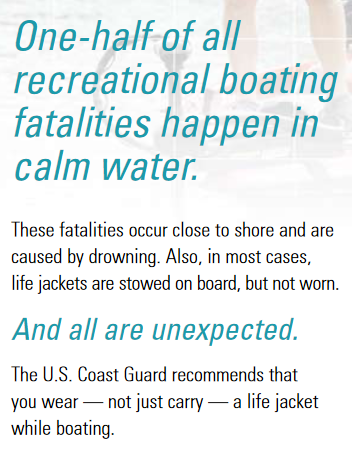
– – Locking up poisons and prescriptions away from kids,
– – keeping non-swimmer kids in shallow water AND within arm’s reach,
as well as making sure they can’t drown in a toilet or bucket of cleaning solution
seems simple enough,
but children die every year from preventable poisonings and drownings.
– –Preparing for a natural disaster will likely take less time and cost less than trying to deal with it afterwards.
Fastest, easiest, cheapest earthquake preparedness projects.
Find myths about earthquakes
(including the misguided “triangle of life”, animals predicting quakes, position of the moon and planets)
at https://www.usgs.gov/programs/earthquake-hazards/faqs-category
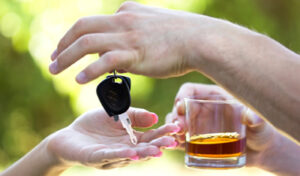
– – About every 51 minutes, someone is killed in a drunk driving crash, many others injured.
Buzzed driving is drunk driving.
Buzzed horseback riding is drunk horseback riding.
Buzzed surfing is drunk surfing.
Buzzed skiing is drunk skiing.
“Not only can a single drink impair driving skills and slow reaction times,
but it also makes it more likely that drivers will speed and not wear seat belts.”
“Impaired drivers tend to fix their vision on a particular object and not see others. The ability to detect persons and vehicles to the side is almost completely lost.”
First Aider’s Guide to Alcohol from Princeton University
has first aid for alcohol and alcohol myths, including, no, you can’t sober up quickly if you have to. And:
“One in three 18 to 24 year olds admitted to emergency rooms for serious injuries are intoxicated”. . .
“About one-half of all fatal traffic crashes among 18 to 24 year olds involve alcohol.”
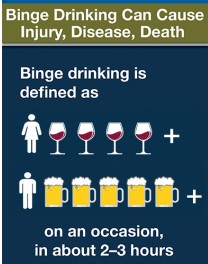
De Anza College Health Services offers: https://www.deanza.edu/healthservices/wellness/drugs-alcohol.html
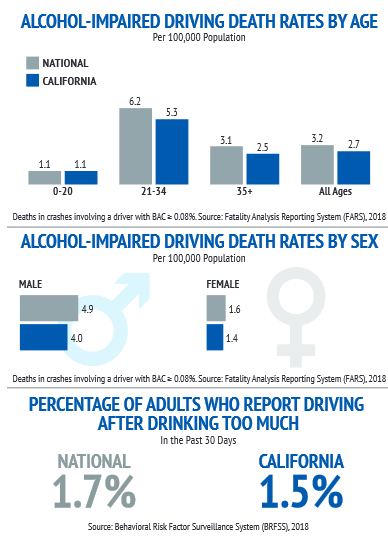

9) Being out in the wilderness is inherently dangerous and causes more injuries.
Not true
The climbing rangers in Wyoming’s Grand Teton National Park have found that
less than 1 percent of backcountry accidents are due to natural causes,
like falling rocks, avalanches, and animal attacks.
The rest are due to ‘pilot error.’ In other words, people don’t die from unexpected snowstorms;
they die from not expecting and preparing for unexpected snowstorms.
A Western Journal of Medicine article on injuries in the wilderness in California said:
“Contrary to popular belief and media attention . . . most wilderness injuries in California are not due to exotic causes, (wild animal attacks, rock climbing, hang gliding and so on). Rather they are due to common activities, such as hiking, walking, skiing and driving. Fighting and substance abuse, for example, account for more than three times as many injuries as rock climbing. . .
Search and Rescue agencies in all national and state parks / forests have had to rescue many people who should not have put themselves into a predicament. People don’t carry the headlamp / flashlight they really need, instead counting on their cell phone to function long enough and bright enough after dark (it won’t). They ignore warning signs, climb over barriers meant to protect them (and as a result slide over waterfalls in Yosemite), hike past trail closure signs, drink water from streams and lakes without purifying it and even wear shoes with the tread worn off them (or, yes, really, flip-flops with no ankle support or scrambling barefoot off-trail).
Some have needed to be rescued when they failed to include salty snacks in their diet, hiked a lot, got very hot and sweated a lot (sweating is your body’s number one way to to cool down), then could no longer sweat because they did not have enough salt to produce sweat, and were unable to even walk, and were starting to die from the heat. Lack of salty foods can be as dangerous as dehydration. “Replace sodium lost through sweat by supplementing your water intake frequently with salty, easily digested snacks, such as trail mix or nuts” is recommended at the hike preparation checklist at:
https://yosemite.org/psar-keeping-you-safe-in-yosemite/
People fly drones over a herd of animals, endangering themselves and others. Use of drones is illegal in National Parks. Please try to get the vehicle license number (and if possible make, model and color) / campsite number / description of anyone using a drone and report them to Rangers. (Do not talk to the people using the drone.) If you have cell phone coverage, call park dispatch. The phone number for dispatch is usually in the park newspaper you receive when you enter the park.
(When people fly drones around forest fires,
the helicopters with firefighters and tankers with sprays to put out the fire can’t fly!
Your photography with a drone can put human lives and property in danger.)

More optional reading:
Motor vehicle accidents are the most common cause of death in National parks,
drowning is the second most common:https://www.nps.gov/yose/planyourvisit/watersafety.htm
Crossing streams safely includes advice from Mount Rainier National Park, Yellowstone National Park, Great Smoky Mountains, and Yosemite National Park
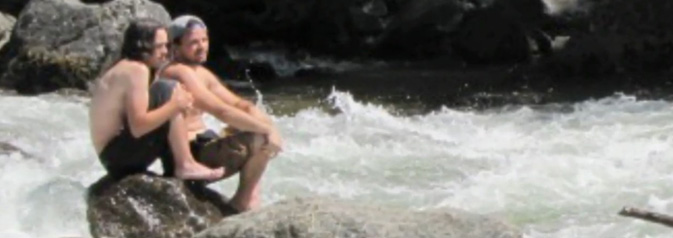
Your safety in grizzly bear territory
The use of cell phones for photography (with or without a selfie stick)
has made preventable injury or even death by selfie common
They were just taking a selfie . . . 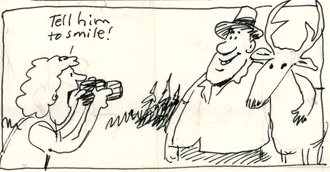
There is fascinating reading on how Yosemite climbers can avoid injuries / stay alive, by Search and Rescue (SAR) Ranger John Dill, (including sections on environmental dangers, descents, big wall bivouacs, unplanned bivouacs, loose rock, climbing unroped, leading, falling, learning to lead, the belay chain, helmets, states of mind, rescues, and risks, responsibility and the limits of climbing), at:
climbing advice
and read about climbing regulations, the reasons behind them and practical advice on how to follow the rules, including fixed ropes, permits and sleeping on big walls, food storage, trash and human waste while climbing, bouldering, slacklining, and bolting ethics at: https://www.nps.gov/yose/planyourvisit/climbing_regulations.htm
https://www.nps.gov/yose/blogs/psarblog.htm has many stories.
(Note to on-line users not in my classes: this is a study sheet. It is not complete instruction in first aid or the topic named in the webpage title.)
The author of this webpage, (written as a homework reading assignment for my students), does not give any warranty, expressed or implied, nor assume any legal liability or responsibility for the accuracy, completeness, or usefulness of any information, product, or process included in this website or at websites linked to or from it. Users of information from this website assume all liability arising from such use.
